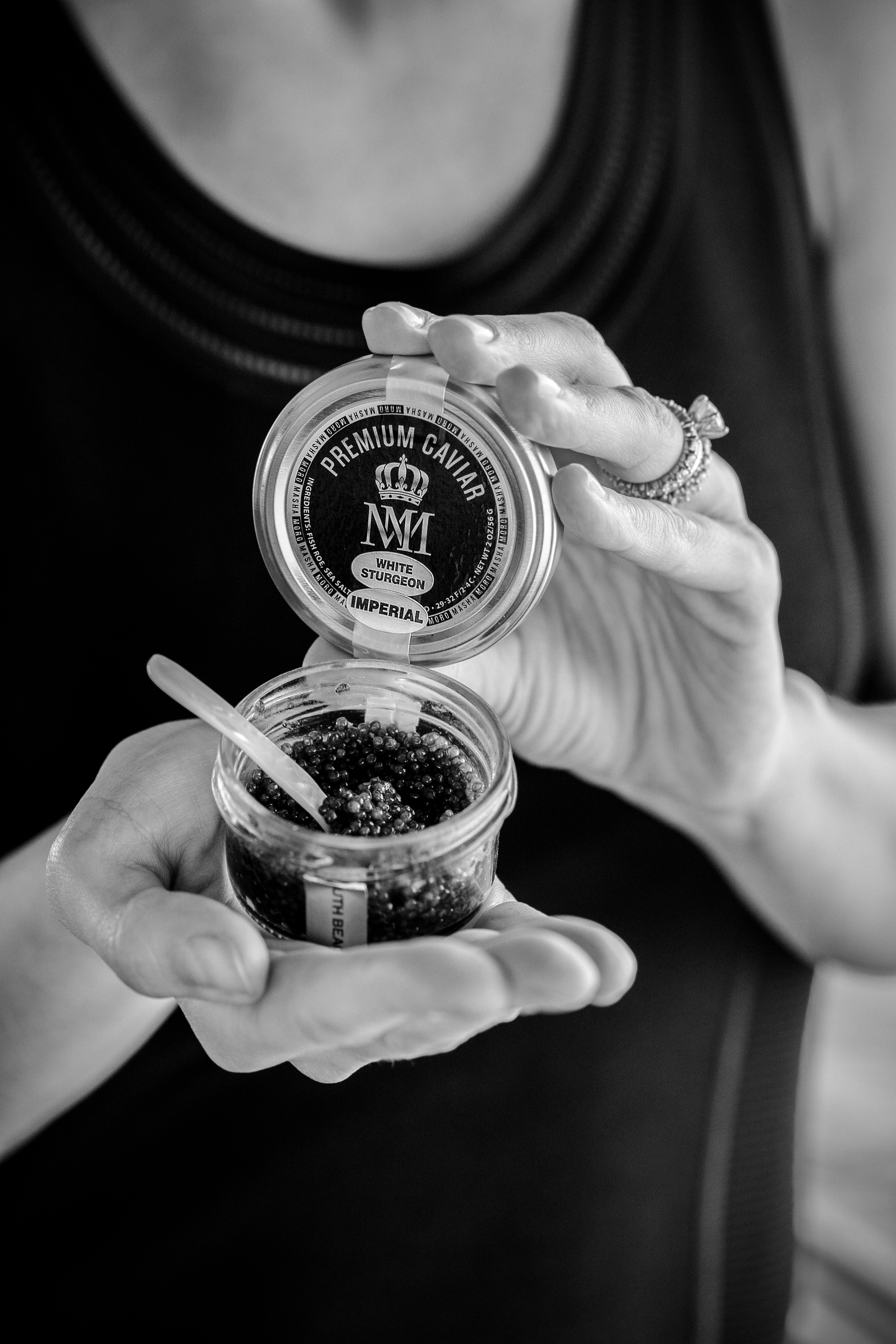Types of Sturgeon Caviar
- Masha Moro

- Mar 28, 2021
- 2 min read
Updated: Nov 13, 2025
Sturgeon is the common name for the 27 species of fish belonging to the family Acipenseriformes. Sturgeon evolution dates back to the era of dinosaurs. They are long-lived, late-maturing fish with distinctive characteristics. Several species can grow quite large, typically ranging 7–12 ft in length.
Here are several of the best caviar producing sturgeon:
Beluga, or Great, sturgeon (Huso huso): Beluga sturgeon typically weigh 80 to 400 pounds when harvested and may weigh up to 2,000 pounds. 15 percent of its weight is eggs. The female Huso huso doesn't bear eggs until around 25 years old and may live up to 150 years. Beluga has a rich, creamy flavor and delicate texture. It is considered the highest premium grade caviar available. and its rarity, however, is what makes it the most esteemed of all caviars.
Sevruga sturgeon (Acipenser stellatus): These small sturgeon are usually under 50 pounds. Ranks with paddlefish as having the smallest, softest eggs. Rarely available, but a treat when it is. The fragile roe exhibit little to no pop, but what it lacks in texture it makes up for in flavor; the oils recall the concentrated aroma of high quality tuna belly that’s been poached in good olive oil.

White sturgeon (Acipenser transmontanus): Small (but not tiny) eggs with a strong punch of brine that has a distinct but not epic finish. Typically a softer roe without much pop.
Kaluga (Huso dauricus): Frequently marketed as a beluga substitute due to its medium- to large-sized beads. Flavor is sometimes a bit neutral, along the lines of osetra.
Amur sturgeon (Acipenser schrenckii): Ranks alongside (or just behind) kaluga as the caviar with the largest eggs. The eggs sport a stunning complexion that ranges from olive green to nearly coral. They burst only after a firm flick of the tongue. The flavor is distinctly sweet at first (in the same way a scallop is sweet) followed by a mid-level brine with a touch of oily richness — like a slice of toro that’s been gently torched. Often a more compelling (if not entirely cheaper) alternative to osetra.
Shovelnose sturgeon (Scaphirhynchus platorynchus), aka Hackleback caviar: Small to mid-sized beads on par with transmontanus roe, but lacking the same depth of flavor. The experience sometimes recalls eating a cheap supermarket steak rather a dry-aged strip. Works well for parties where black caviar will seem fancy but will inevitably be used for chips and dip.


Comments